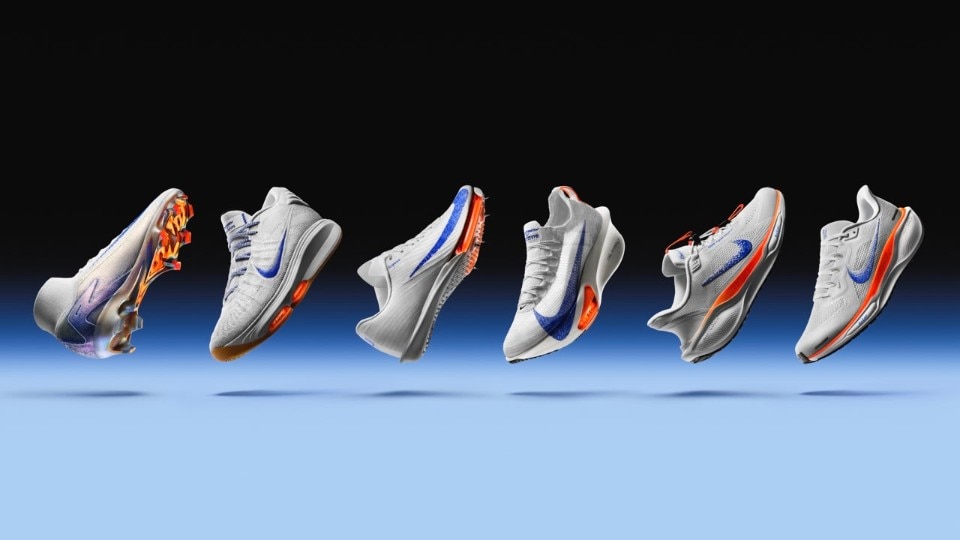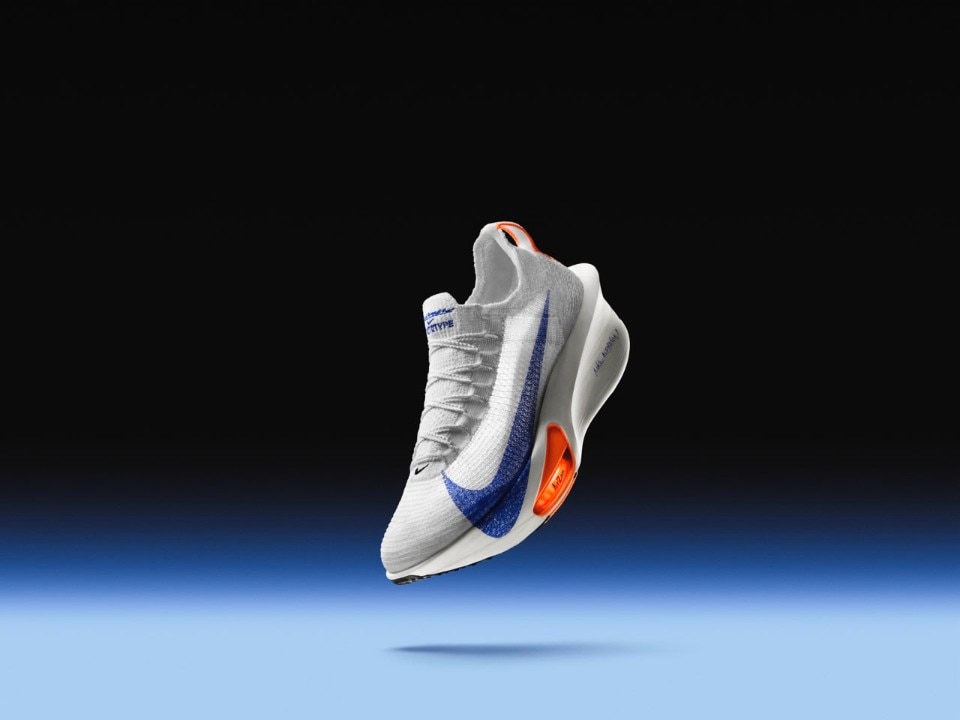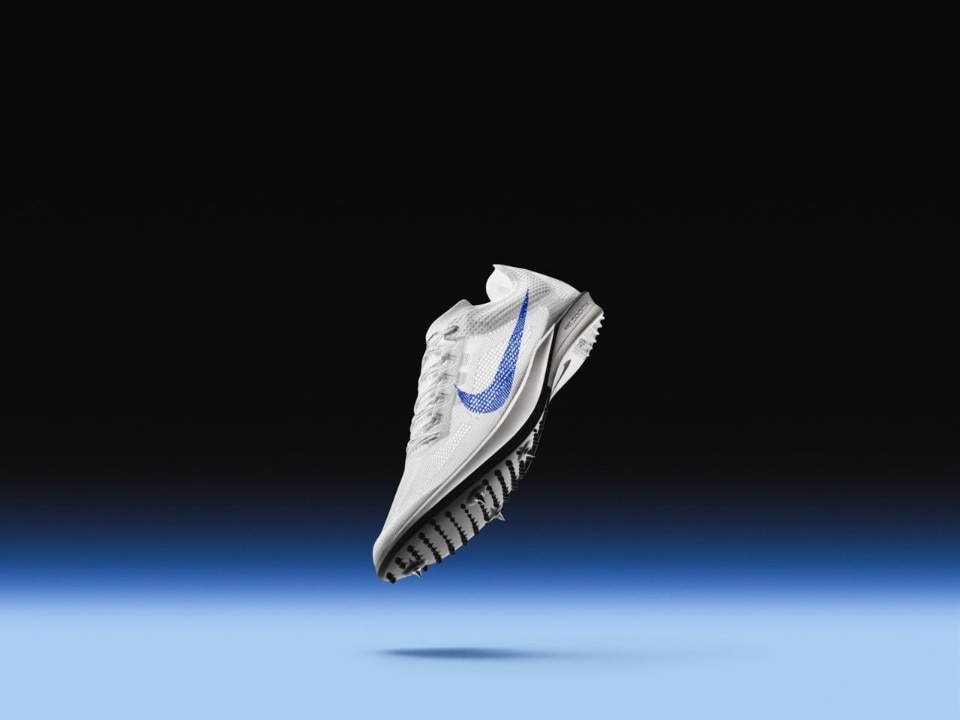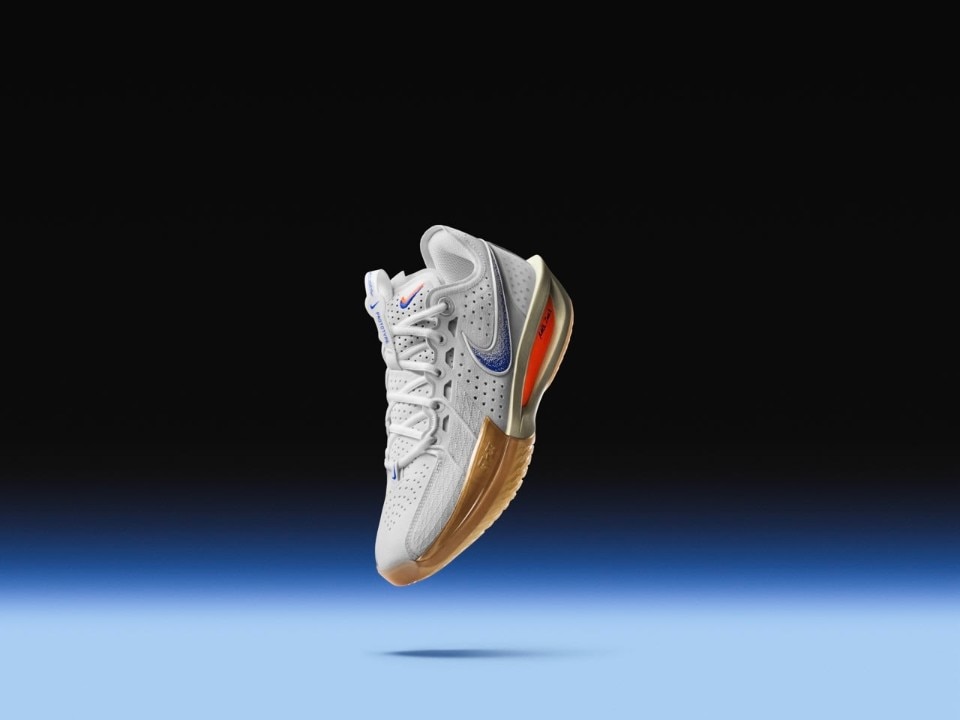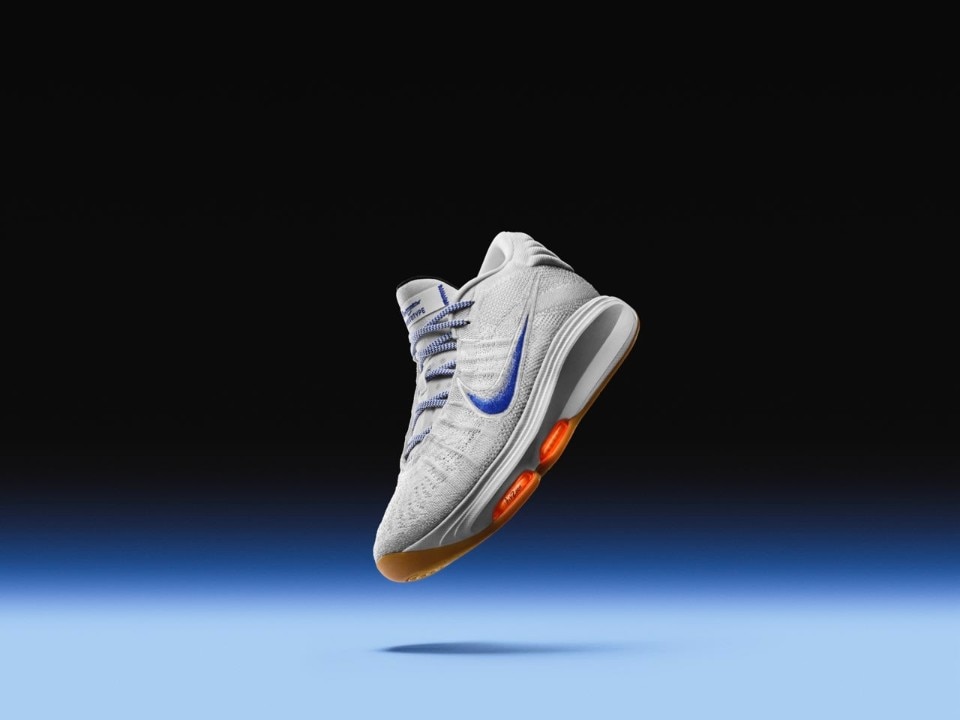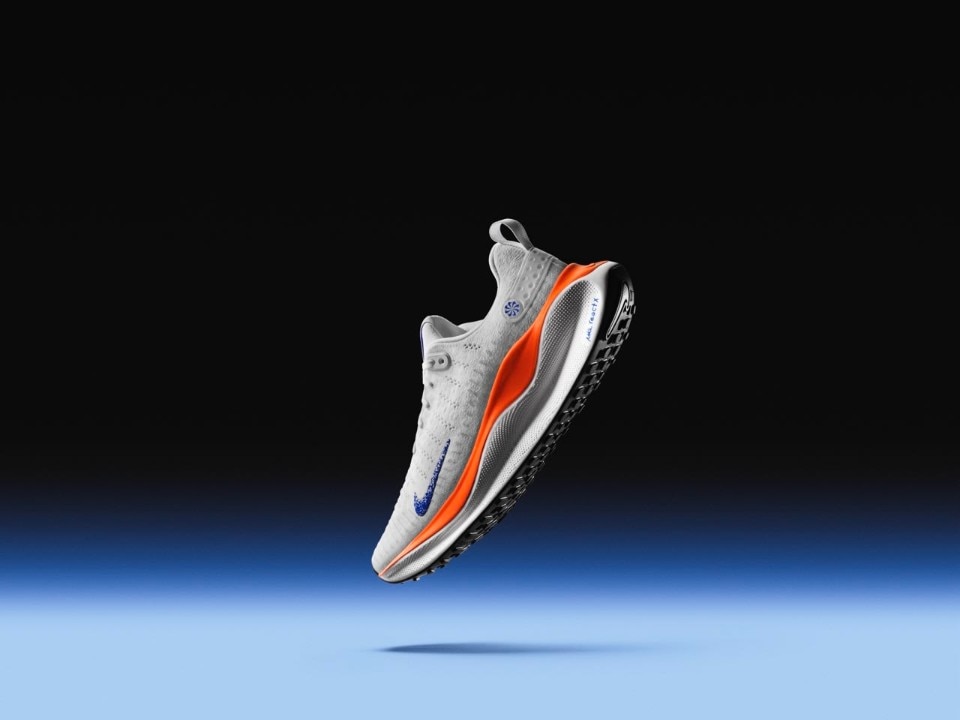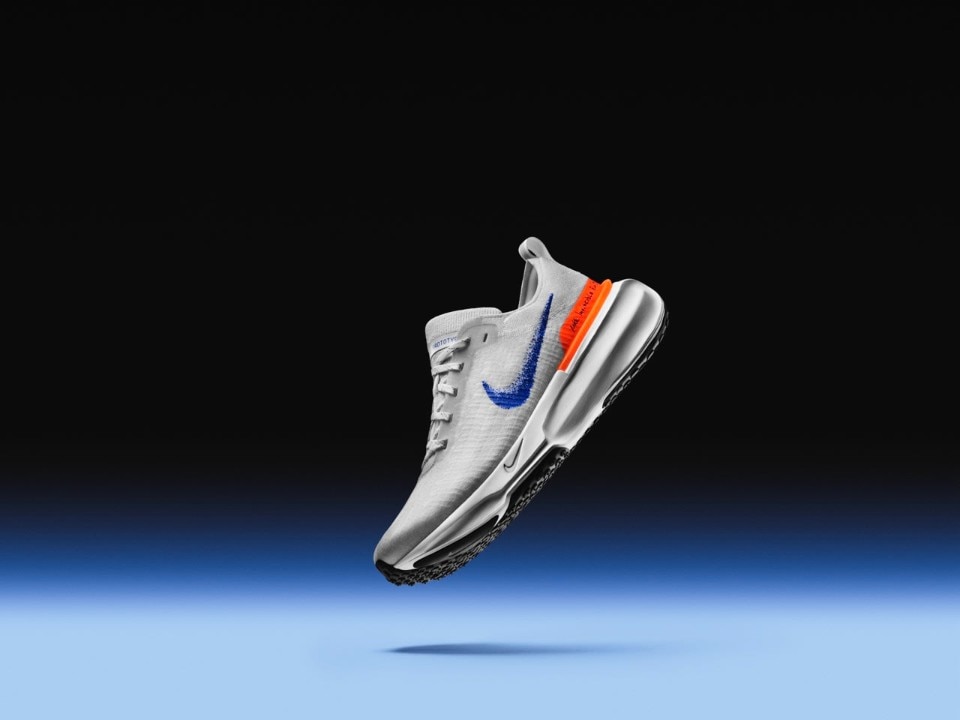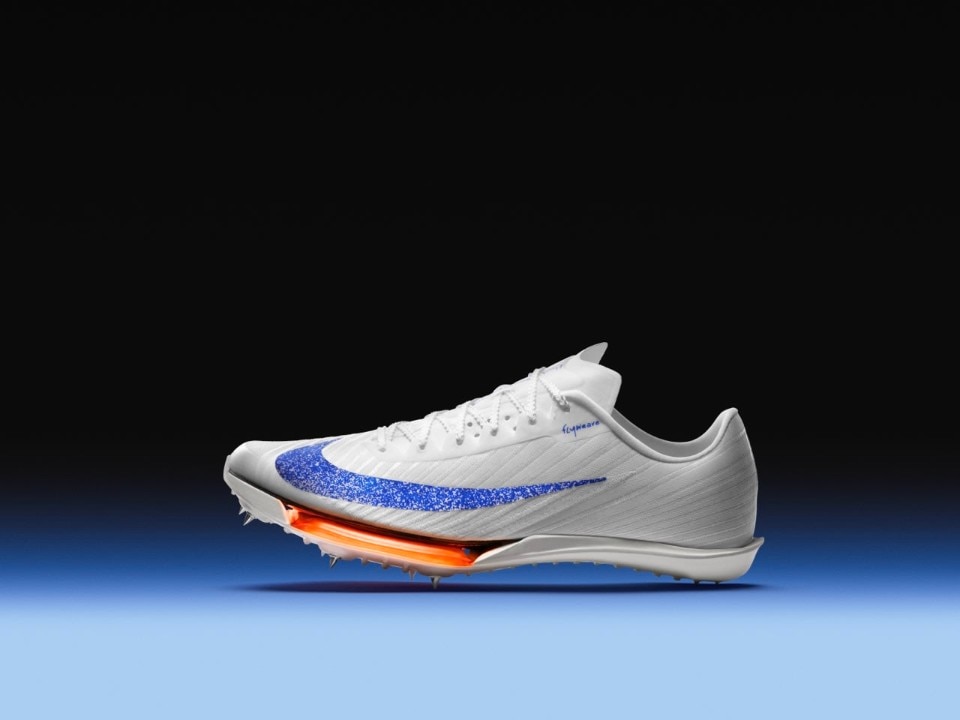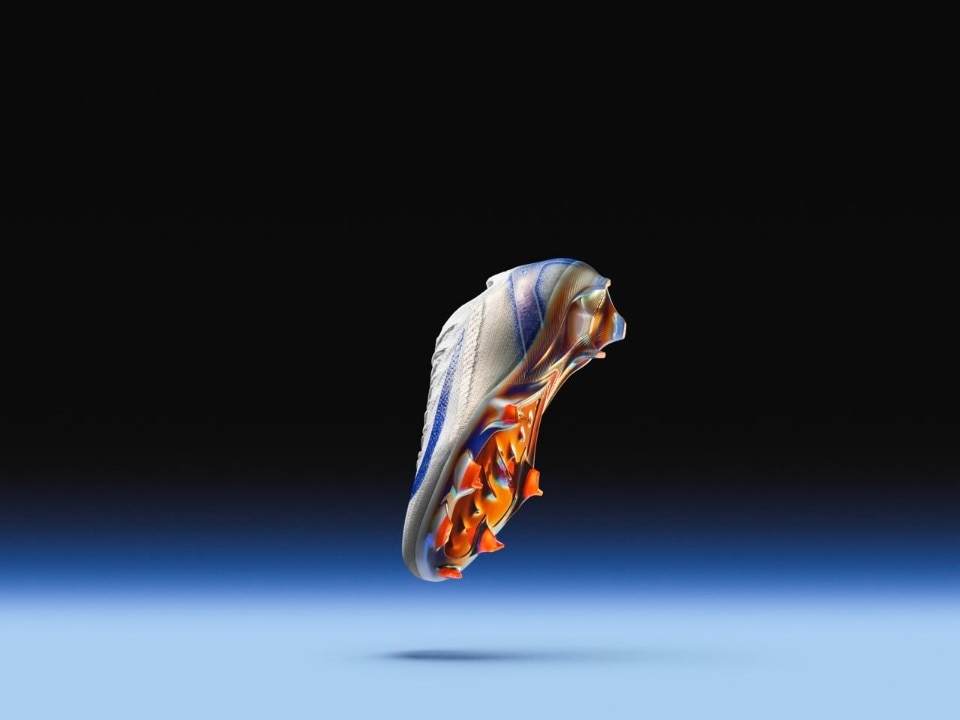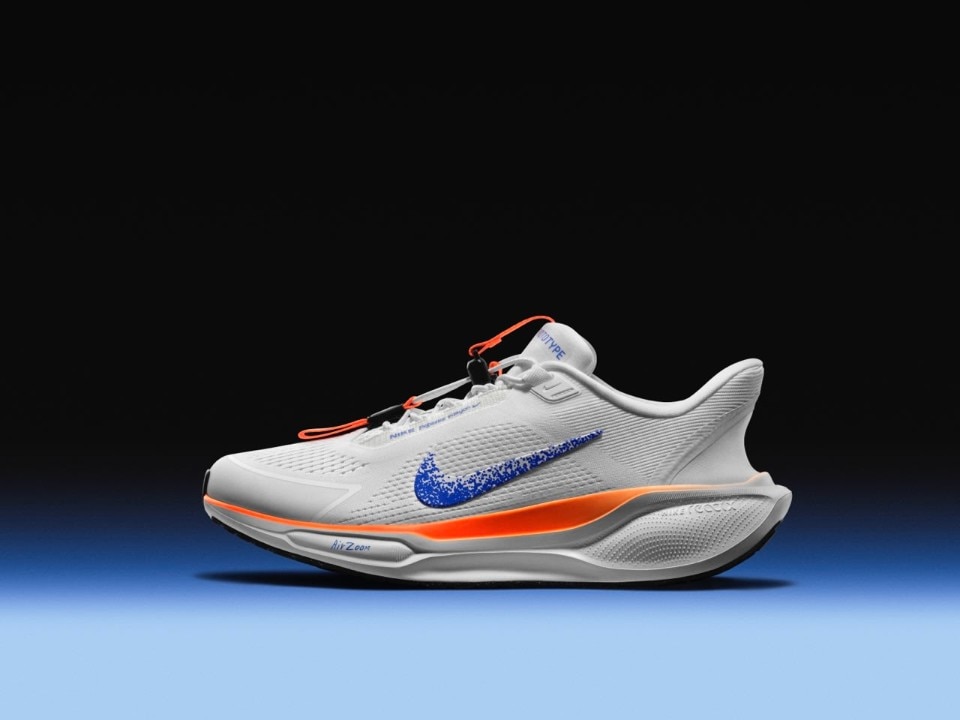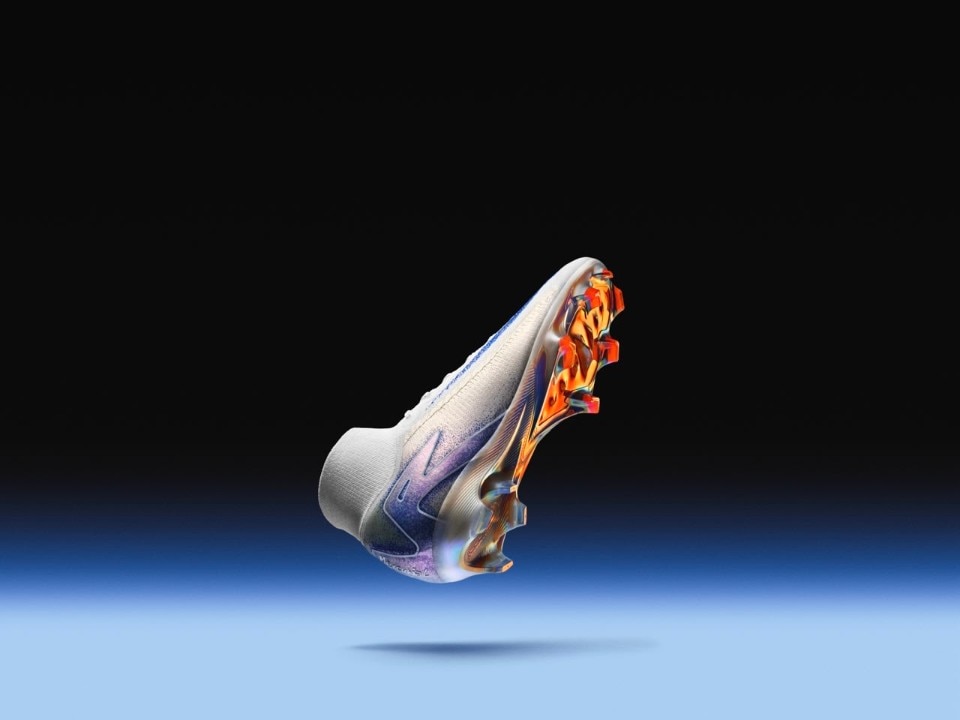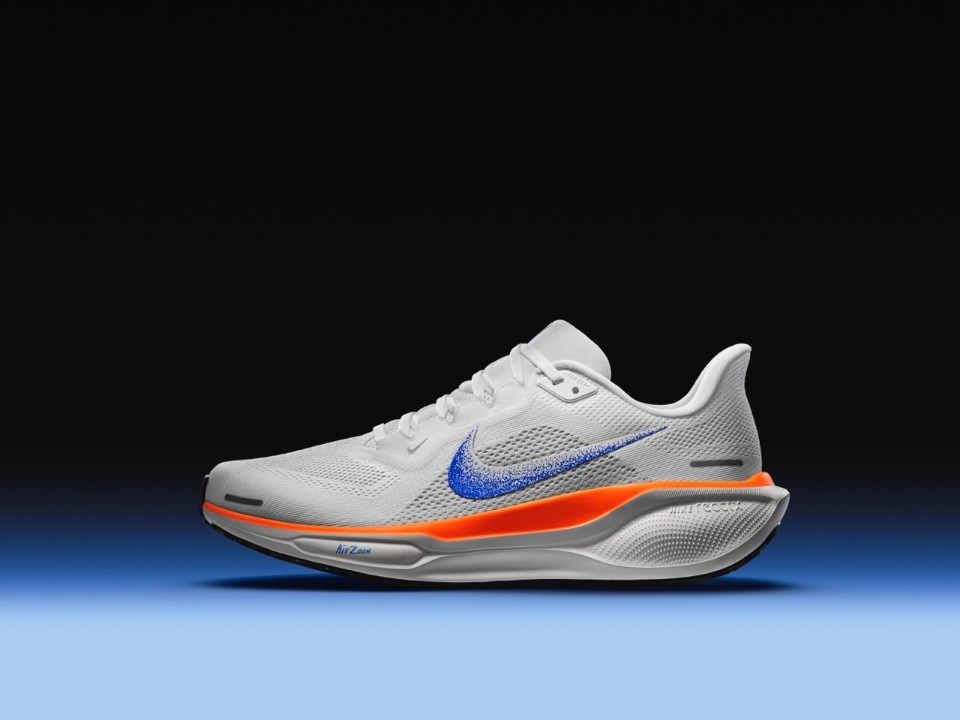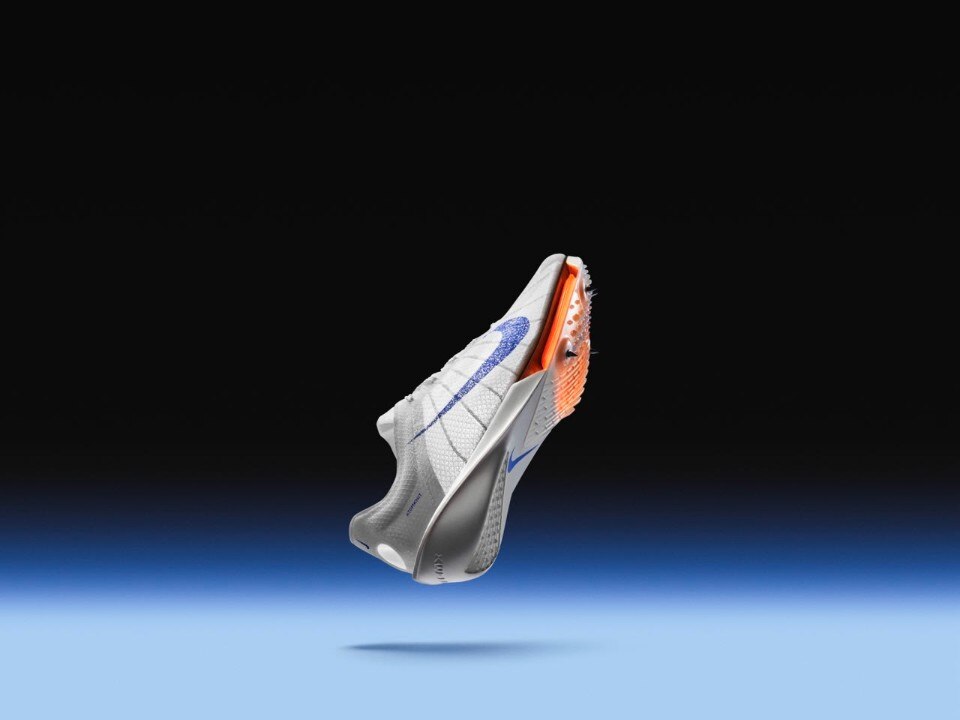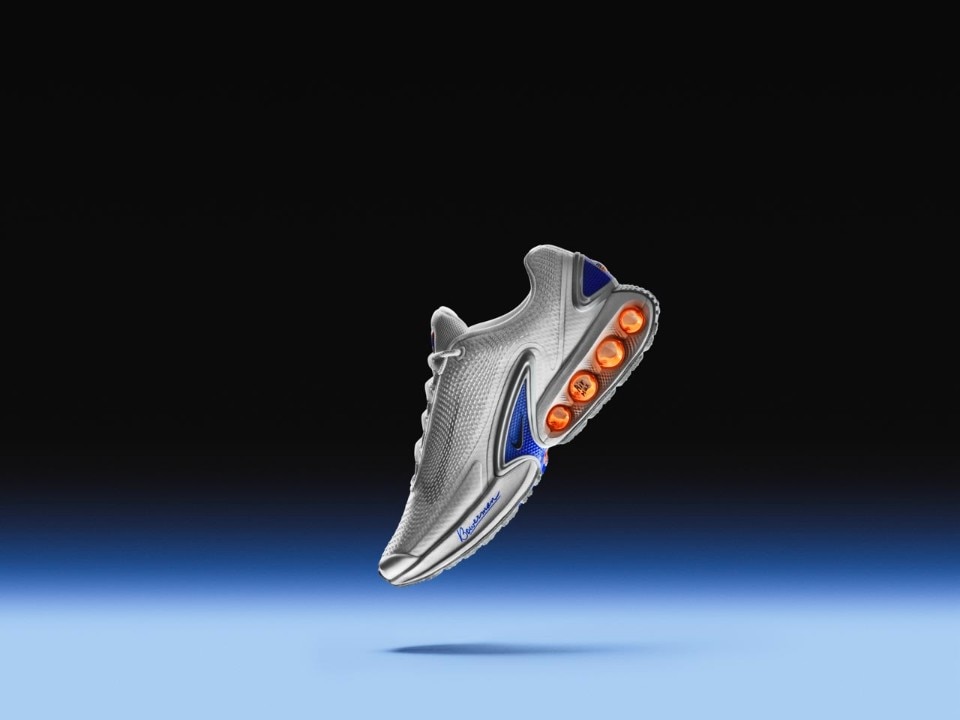For a few years now, Alan hasn’t been alone anymore.
With him is Haley.
Together they move, in one room. All day, every day.
A sophisticated network of sensors detects their movements and how they relate to the Nike clothing they wear. Outside the room, the data is displayed in real-time on two screens. That data is processed, studied, and turned into design. That design then turns the dreams of athletes worldwide into reality.
Haley and Alan are two mannequins, integral parts of the cutting-edge technological setup at the Nike’s LeBron James Innovation Center, a building of over 2,000 square meters on the brand’s campus in Beaverton, Oregon, on the American West Coast. “This is where we turn athletes’ dreams into action,” Chief Innovation Officer John Hoke tells Domus. Haley’s arrival is not random; it represents Nike’s increased attention to the performance of female athletes and their unique needs compared to male athletes.
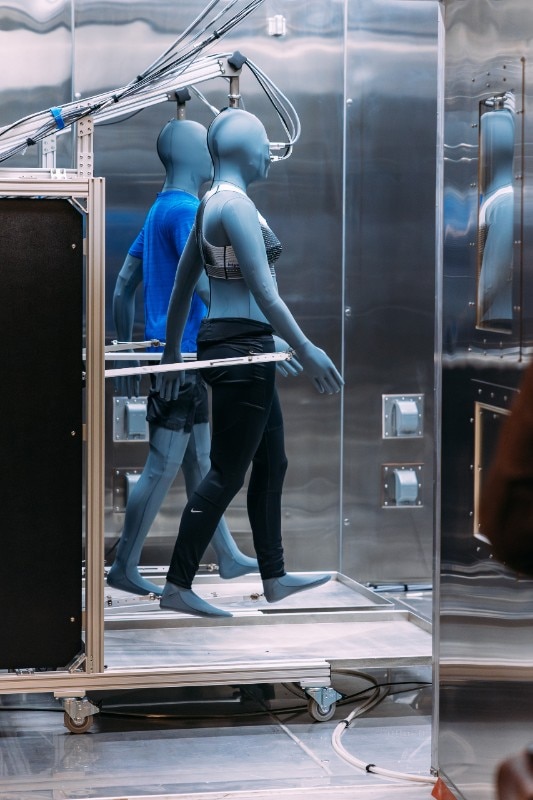
From data to design
The Innovation Center is an oversized building – just like LeBron James, you might say. The ceilings are soaring, the hallways immense. The ground floor is lined with sports icons: Carl Lewis, Sue Bird, Michael Johnson, and others. But upstairs is where the true magic happens. Here is where performance is transformed into data. That data is used to design the best possible apparel and footwear.
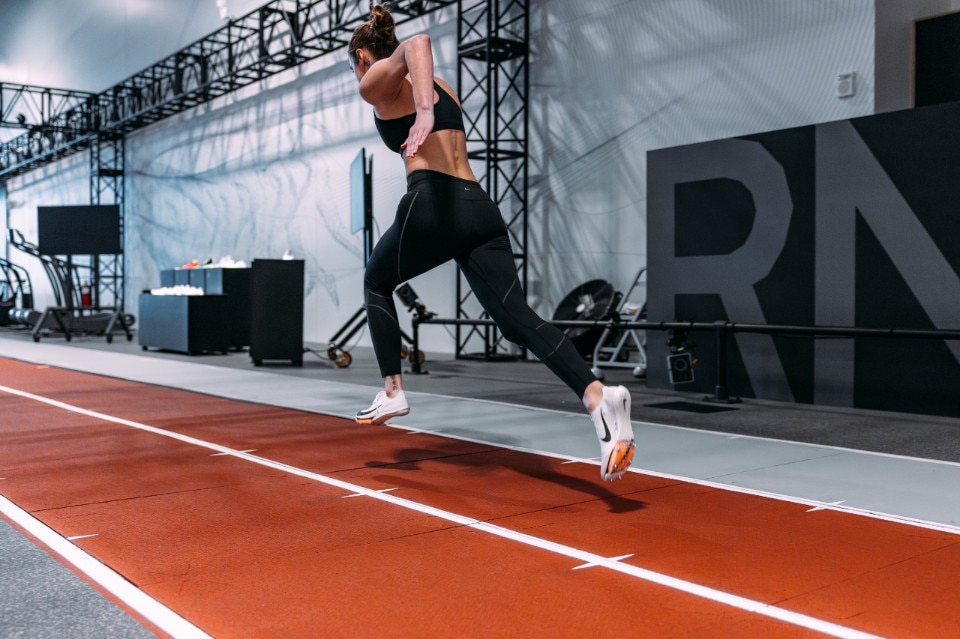
In a series of rooms named after Olympic cities – Rio, Athens, Sydney – every weather condition on Earth can be replicated, from -20 degrees to about 50 degrees. Inside, athletes move, running or using an exercise bike. Data is collected on how they sweat: invaluable for designing the best possible sportswear, the lightest, the most performing. There’s a soccer field where a boy trains by kicking into a goal, an NBA basketball court where two female athletes run wearing masks, an athletics track where a light trail shows the perfect run. Everywhere, screens report real-time performances. A sprinter runs down the 100-meter lane. Before a global audience of journalists, research is being presented on breakdancing, a discipline making its Olympic debut this year. It’s science applied to sports performance.
Nike Blueprint Pack
On the way to Paris
These are special days at Nike. The Paris Olympics are just around the corner. “Every four years, we have the opportunity to truly help our athletes create their dreams,” explains Martin Lotti. Swiss-born with family roots not far from Milan, Lotti has been with Nike for over 25 years and has served as head of design since late 2023. Domus meets him in the Serena Williams Building, over 90,000 square meters dedicated to creativity and design in the heart of the Beaverton campus. Here, design isn’t “starting with a white sheet of paper and drawing,” explains Lotti. Instead, the approach is that of someone who needs to solve problems. To do that, you have to look at the data first. And listen to the athletes. “Understand what they need, what they like, what they don’t like: physically, and emotionally.”
These athletes have trained their whole lives for this moment, for the Olympics, continues the Chief Design Officer. The designers’ task is to help them “realize their dreams with innovation, with incredible products and incredible experiences.” Lotti, who says he was also shaped by the pages of Domus, expresses his genuine enthusiasm for his role in a calm tone. “From a design perspective, isn’t it incredible?”
Understand what they need, what they like, what they don’t like: physically, and emotionally.
Martin Lotti
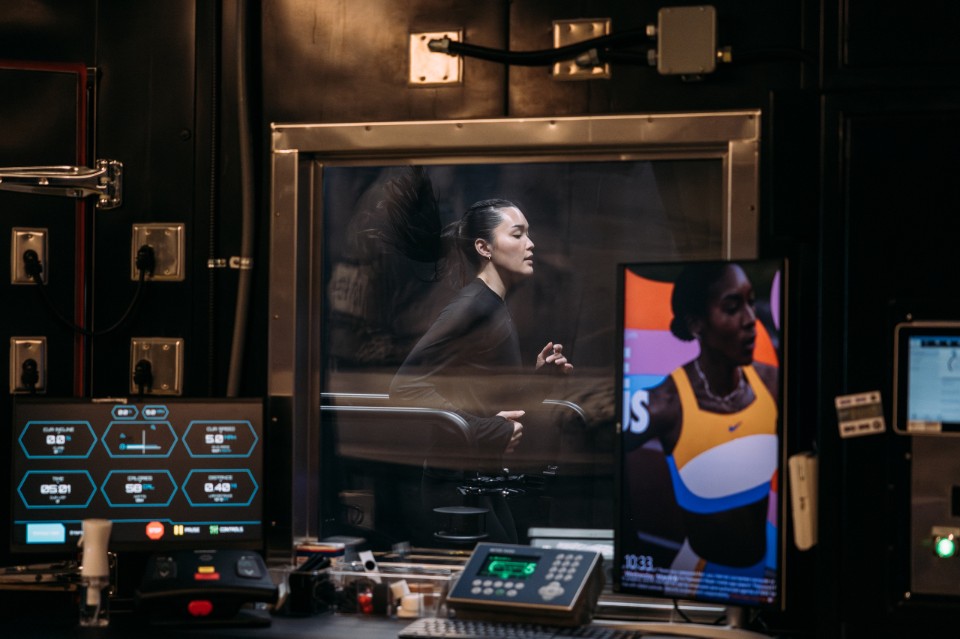
Bill Bowerman’s legacy
Bill Bowerman, who co-founded Nike with Phil Knight, was a dream designer. Son of the governor of Oregon, coach of the U.S. track team at the ’68 Mexico City Olympics, and author of a seminal book on jogging, Bowerman led the evolution of a simple sportswear import company, Blue Ribbon Shoes, into the behemoth we know today.
In the early 1970s, Oregon athletes faced a problem: their spiked shoes were not performing on the new urethane tracks. A new sole was needed. Bowerman scoured every corner for a solution, reportedly even asking his wife, Barbara, to show him her jewelry to inspire a new pattern for the soles. He found his answer in the kitchen, in the waffle iron – a wedding gift from 1936. “Technologies have changed and tools have changed,” says Lotti, “but Nike’s approach and belief have always been to make things better, and that’s been true since Bill Bowerman poured rubber into his kitchen’s waffle iron.”
The Waffle Trainer made its debut a few years later in 1974, and it was this shoe that inspired the Blueprint Collection, recently unveiled by Nike in Paris ahead of the Olympics. Not only did the shoe influence the use of color – including orange, a tribute to Nike’s iconic shoe boxes – but it also shaped the entire philosophy. This philosophy has been reimagined with contemporary technologies and an increasingly sophisticated use of Air, the air cushion made in Beaverton that has propelled athletes to extraordinary performances for over three decades. Because other materials may be okay, “but Air is much better,” says Lotti.

The Blueprint Pack is a tribute to Bowerman's “obsession with the best possible sports performance" and comprises a lineup of 13 products, the best of Nike's sports footwear designs, including new shoes for the track and field, the Nike Victory 2 and Maxfly 2, a new basketball shoe (G.T. Hustle 3) and the 2024 version of the Nike Mercurial, the premium football shoe. Obviously, they all take advantage of Air's innovations. All shoes that this summer, we hope, will become symbols of records, victories, successes.
Nike has always looked to the future
“In terms of design, it’s what I love,” Lotti says of this collection, explaining how it’s futuristic on one level – new technologies, new materials, ever-evolving versions of Nike Air, use of computer-aided design, and so on – but on the other hand it draws from the past to shape the future for Nike and athletes worldwide. “Bowerman was obsessed with the weight of the shoe”. So much so that the logo was almost “tattooed on the shoe” – he personally drew the Swoosh with a ballpoint of the shoes. His credo was ‘less weight, more speed,’” Nike’s Design Chief tells Domus.
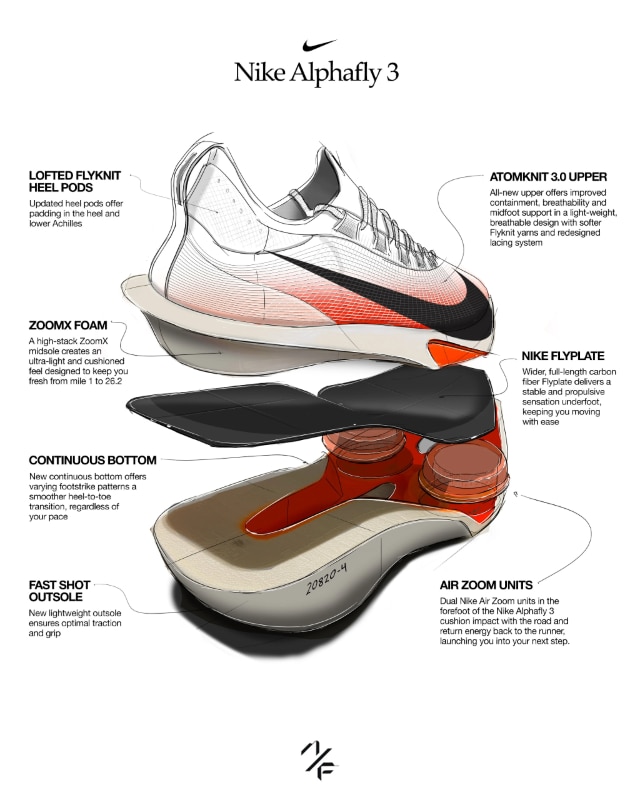
But there is no room for nostalgia at Nike. “It always starts with the future,” he explains. “And we live in the future.” With Paris on the horizon, the focus is already on the next Olympics, in Los Angeles. “We’re already working on it,” he confirms. “And it all makes you want to imagine what’s next.” Nike is a design-led company, an idea factory with over a thousand designers generating a myriad of projects. And when Domus asks Martin Lotti how he navigates change, how he finds his direction in a world of constant innovation, the Chief Design Officer’s answer is as simple and elegant as a mathematical equation: “Ground yourself in the athlete in the consumer: because you can do many things, but what truly matters is to be true to what helps solve problems.”
Opening image: The Nike Blueprint Pack, which we will see this summer in Paris. Courtesy of Nike.


